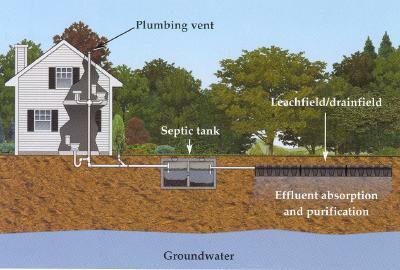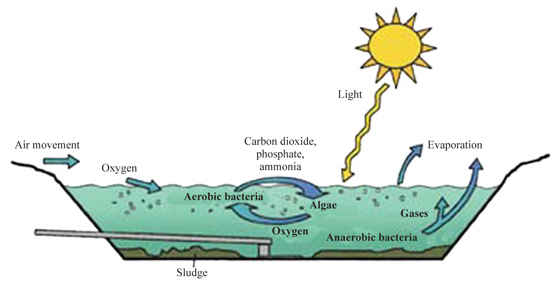Now that I have complained for two blogs how no one knows what we do…how about a little earth science lesson? Sounds like great fun to me! By the time you’re done with this post you’ll know everything (and then some) about rural living and wastewater — and you’ll probably have contorted your face like everyone else when I explain this information. Good times had by all, right? ( I think it’s posts like this that MIGHT keep me from being a part of blog groups other women my age are writing….just one more topic to bring up at my Liquid Waste Anonymous meeting….kinda sucks I’m the only member ).
On with the earth science lesson! Let’s get you engaged by considering a real life scenario…
Let’s say you and the fam have decided to leave the city behind and have purchased yourself a nice spot of land out in the country. You’ve picked out your floor plan, the color of siding and brick, your kitchen cabinets, tile and counter tops. You’ve ordered all your stainless steel appliances (the kind that DON’T leave behind the icky fingerprints…) and can’t wait to bathe in your nice whirlpool tub.
Then news comes from your builder that he is ready to break ground but needs the sewer permit and so he asks you, what type of wastewater system would you prefer? A lagoon, or a septic system? He needs to know before he can pull the permit. You think to yourself….. “Wastewater? Why would I want wastewater on my land?” And then, the builder smiles and explains that if you want to function like a normal human in your new house with the capabilities to shower, run a dishwasher, and flush, you have to put in a wastewater system in the form of a lagoon or septic system.
Then comes your next question…what’s the difference? (At this point, your builder will probably give you my phone number and you’ll get the rest of your information from me!)
Enter Jaime, wastewater “explainer” extraordinaire!
First things first….did you know that soil can be looked upon as a type of sponge? I’m sure if you have done any yard work you have seen how your soil either absorbs water or does not. When it comes to decided whether you install a septic system or a lagoon you will first have to determine what type of soil you have. If your soil is the kind that will act like a good sponge, then you can install a septic system. If you do not, then you’ll have to install a lagoon. The way we determine what kind of soil you have is through a percolation test.
What’s a percolation test? Why, I’m so glad you asked!
In a percolation test, we drill holes in the ground and saturate them for 24 hours. After that, we fill them with water again and then watch them for the next few hours to see how the water has disappeared into the ground. This simple process produces a particular number and tells us if a septic system can be installed.
Most people want a septic system because it is almost completely underground. Homeowners like this because…really, who wants to look at their wastewater?
I’m a visual person…so here’s a picture of a basic residential septic system.
Nice, huh?
All the water from your house drains into the septic tank. It’s in the septic tank where all the bad stuff is broken down and then slowly drains out to the leachfield/drainfield (also sometimes called lateral field). From there, the water either evaporates into the air or drains down into the soil. By the time the wastewater reaches this point in your system, the water is suitable for the ground and won’t harm any of the groundwater. (All of this is taken care of by mother nature and the bacteria she uses to breakdown bad stuff…well, mother nature and some other stuff – like pipe, septic tank, and lateral half rounds –courtesy of us.)
That’s a septic system.
So, what’s a lagoon?
A lagoon is kind of like a little pond…but not one you’d EVER want to swim in. In fact, you are required by law to keep a locked fence around it with a sign that says STAY OUT! (Which amuses me….like someone would really WANT to enter a premises like a poop pond…but I digress…)
Here is a nice picture of a lagoon system too…
In a lagoon system everything from the house flows directly into the pond (sometimes there is a tank installed before it reaches the pond to help decrease the sludge build up at the bottom). Basically, the lagoon acts like the laterals and tank all in one. A lagoon requires open air for the bacteria to break down bad stuff and function properly.
So, this is the science behind how wastewater systems work in the country. Obviously a bit different than those of you who live in town. I realize this isn’t something people want to think about (or even read about…) but it is also a necessary part of life if you live outside of the city limits. And this is ONE way our business helps people in their day to day life.
So what have we learned today (except to maybe stop reading Jaime’s blog posts…)? For those of you who don’t live in the country, you can see how country living is a bit different than city living when it comes to your wastewater.
Now at your next cocktail party, you’ll be able to thank me for providing you a new topic of conversation, right? Until next time, friends!


